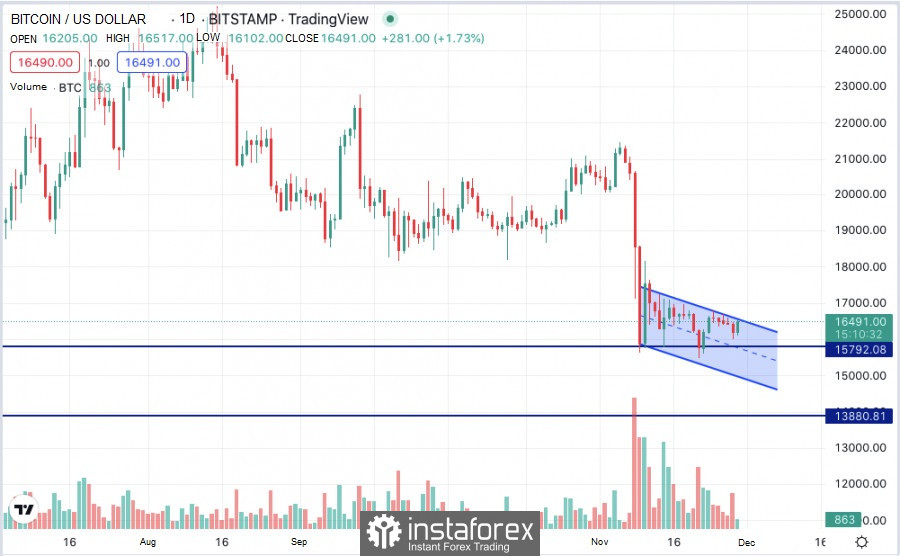The price of the main cryptocurrency rose, returning the losses of the previous trading day. However, this does not change the technical picture, in which the main cryptocurrency is consolidating within the bear flag canvas, which technically leaves the prerequisites for an even greater decline.

In the last 24 hours, the Bitcoin trading volume is $25,195,723,296. The market capitalization of the cryptocurrency market is $834.81 billion, which is 2.01% more than yesterday.
The news that crypto-lending platform BlockFi has filed for Chapter 11 bankruptcy may have had some impact.
Notably, BlockFi, a cryptocurrency lender, filed for bankruptcy protection on Monday, just days after suspending withdrawals following FTX's bankruptcy filing.
According to the bankruptcy filing, its significant exposure to FTX caused a liquidity crunch. FTX, founded by Sam Bankman-Fried, filed for bankruptcy in the US earlier this month after traders withdrew $6 billion from the platform in three days and rival exchange Binance pulled out of a rescue deal.
The second wave of Bitcoin miner capitulation
In addition to the bankruptcy of BlockFi, other important events are taking place. The collapse of the FTX cryptocurrency exchange caused a historic event in the bitcoin market.
Yesterday, on-chain data signaled the second wave of bitcoin miners capitulation in one cycle.
Bitcoin miner capitulation is a scenario that occurs when the price of the main cryptocurrency falls and it becomes difficult for some miners to hold BTC profitably. As a result, they are forced to sell and leave the network.
Historically, miners have had a huge impact on the BTC price. The announced capitulation of miners will put additional pressure on the price of the main cryptocurrency, which is experiencing a historically bad November, falling by 21%.
Bitcoin miners under water
The bitcoin hash rate is starting to change here. The 7-day moving average hash rate is now 13.7% below its all-time high.
Mining difficulty is expected to adjust by around -9% within a week, which will ease the burden on miners, at least in the short term.
Nevertheless, miners margins have been and continue to be declining strongly since June, when the first capitulation in this cycle occurred. Despite this, the hash rate still rose to an all-time high until recently.
This, the increased difficulty of mining, and the price drop associated with FTX have caused the hash price to reach its lowest level since late 2020.
By changing the net position of Bitcoin miners, it is clear that they have been aggressively selling coins over the past month.
"Combined with the decline in the hash rate and today's hash band bear cross, this suggests that we are indeed in a phase of miner capitulation," said Will Clemente of Reflexivity Research.
How long will the capitulation last?
Keep in mind that the capitulation of miners is usually the last stage of a bitcoin bear market. In the 2018 cycle, the BTC hashrate continued to rise as the price reached the $6,000 mark until the final miner capitulation reached $3,000.
In the current cycle, miners have already been capitulated in June. They have reduced their holdings by 4,000 BTC over the past two weeks, equivalent to approximately $68 million.
Prior to that, they had just started a net accumulation trend in September 2022, betting that the bottom had been reached. However, they bet on the wrong horse and now face dire consequences.
Historically, miner capitulation has lasted an average of 48 days, which would end miner pressure by mid-January 2023.
However, the most recent capitulation ended only two months later, on August 18. The end was the third longest capitulation in history. Therefore, Bitcoin bulls should be careful in December and January and watch the behavior of the miners.





















